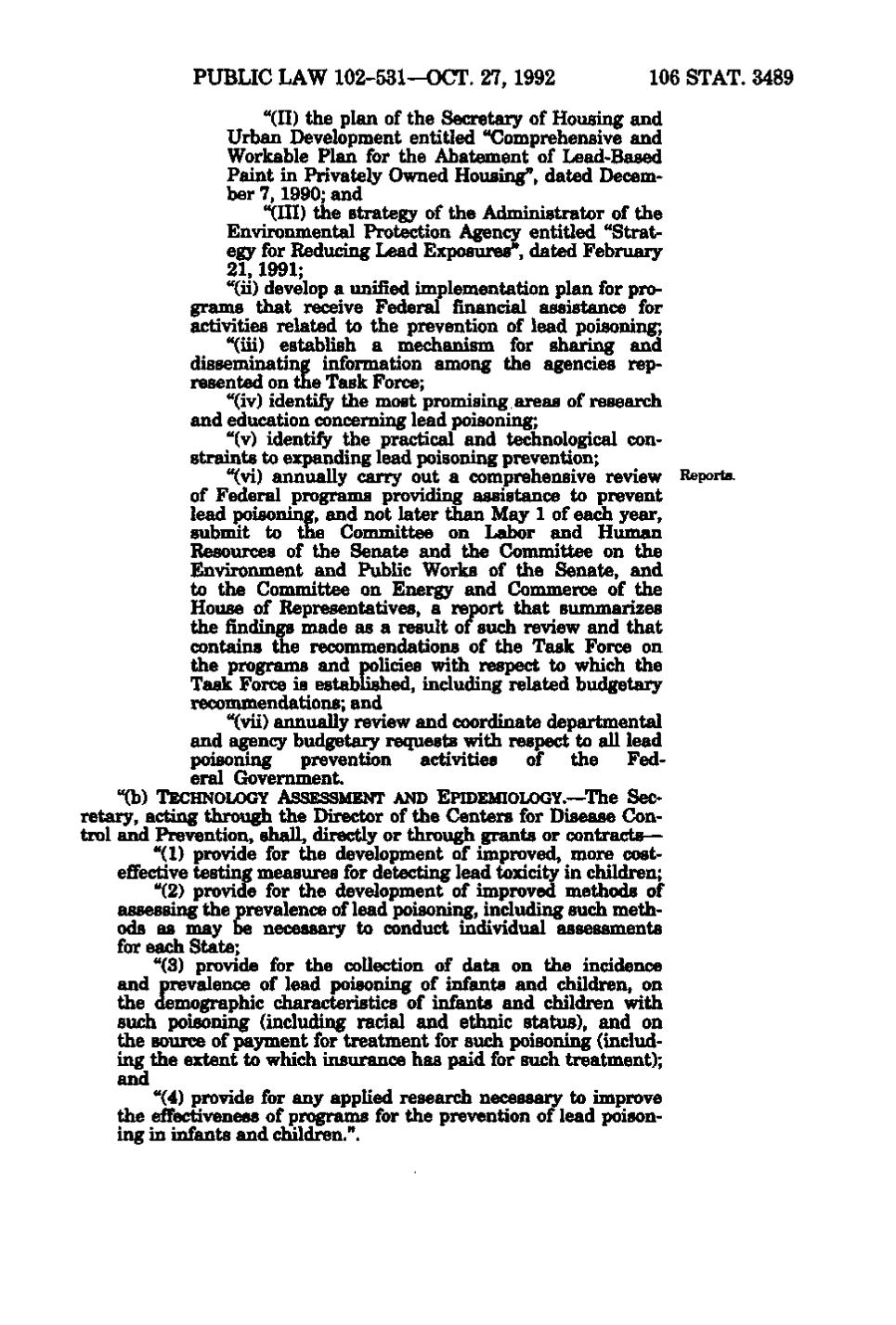PUBLIC LAW 102-531—OCT. 27, 1992 106 STAT. 3489 "(11) the plan of the Secretary of Housing and Urban Development entitled "Comprehensive and Workable Plan for the Abatement of Lead-Based Paint in Privately Owned Housing^, dated December 7, 1990; and "(III) the strategy of the Administrator of the Environmental Protection Agency entitled "Strategy for Reducing Lead Exposures", dated February 21, 1991; "(ii) develop a tmified implementation plan for programs that receive Federal financial assistance for activities related to the prevention of lead poisoning; "(iii) establish a mechanism for sharing and disseminating information among the agencies represented on the Task Force; "(iv) identify the most promising areas of research and education concerning lead poisoning; "(v) identify the practical and technological constrednts to expanding lead poisoning prevention; "(vi) annually carry out a comprehensive review Reports, of Federal programs providing assistance to prevent lead poisoning, and not later than May 1 of each year, submit to the Committee on Labor and Human Resources of the Senate and the Committee on the Environment and Public Works of the Senate, and to the Committee on Energy and Commerce of the House of Representatives, a report that summarizes the findings made as a result of such review and that contains the recommendations of the Task Force on the programs and policies with respect to which the Task Force is established, including related budgetary recommendations; and "(vii) annually review and coordinate departmental and agency budgetary requests with respect to all lead poisoning prevention activities of the Federal Government. "(b) TECHNOLOGY ASSESSMENT AND EPIDEMIOLOGY. —The Secretary, acting through the Director of the Centers for Disease Control and Prevention, shall, directly or through grants or contracts— "(1) provide for the development of improved, more costeffective testing measures for detecting lead toxicity in children; "(2) provide for the development of improved methods of assessing the prevalence of lead poisoning, including such methods as may be necessary to conduct individual assessments for each State; "(3) provide for the collection of data on the incidence and prevalence of lead poisoning of infants and children, on the demographic characteristics of infants and children with such poisoning (including racial and ethnic status), and on the source of payment for treatment for such poisoning (including the extent to which insurance has psiid for such treatment); and "(4) provide for any applied research necessary to improve the effectiveness of programs for the prevention of lead poisoning in infants and children.".
�
